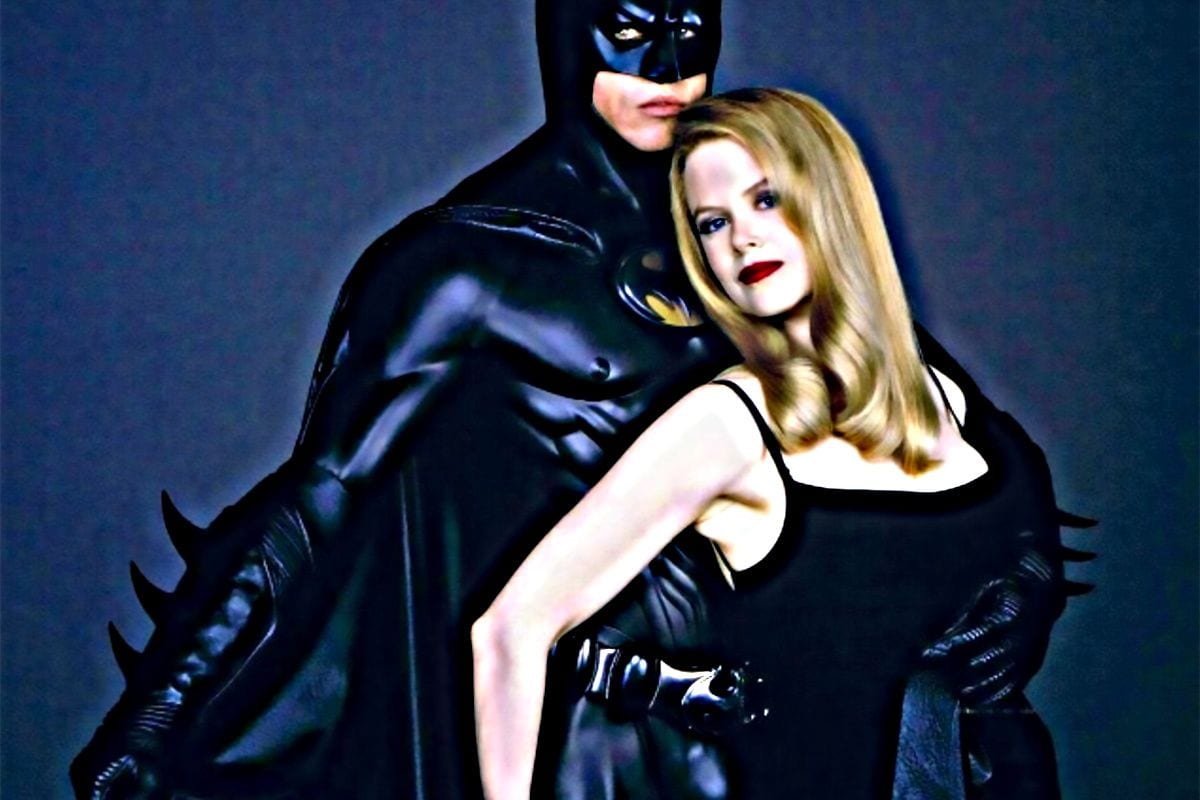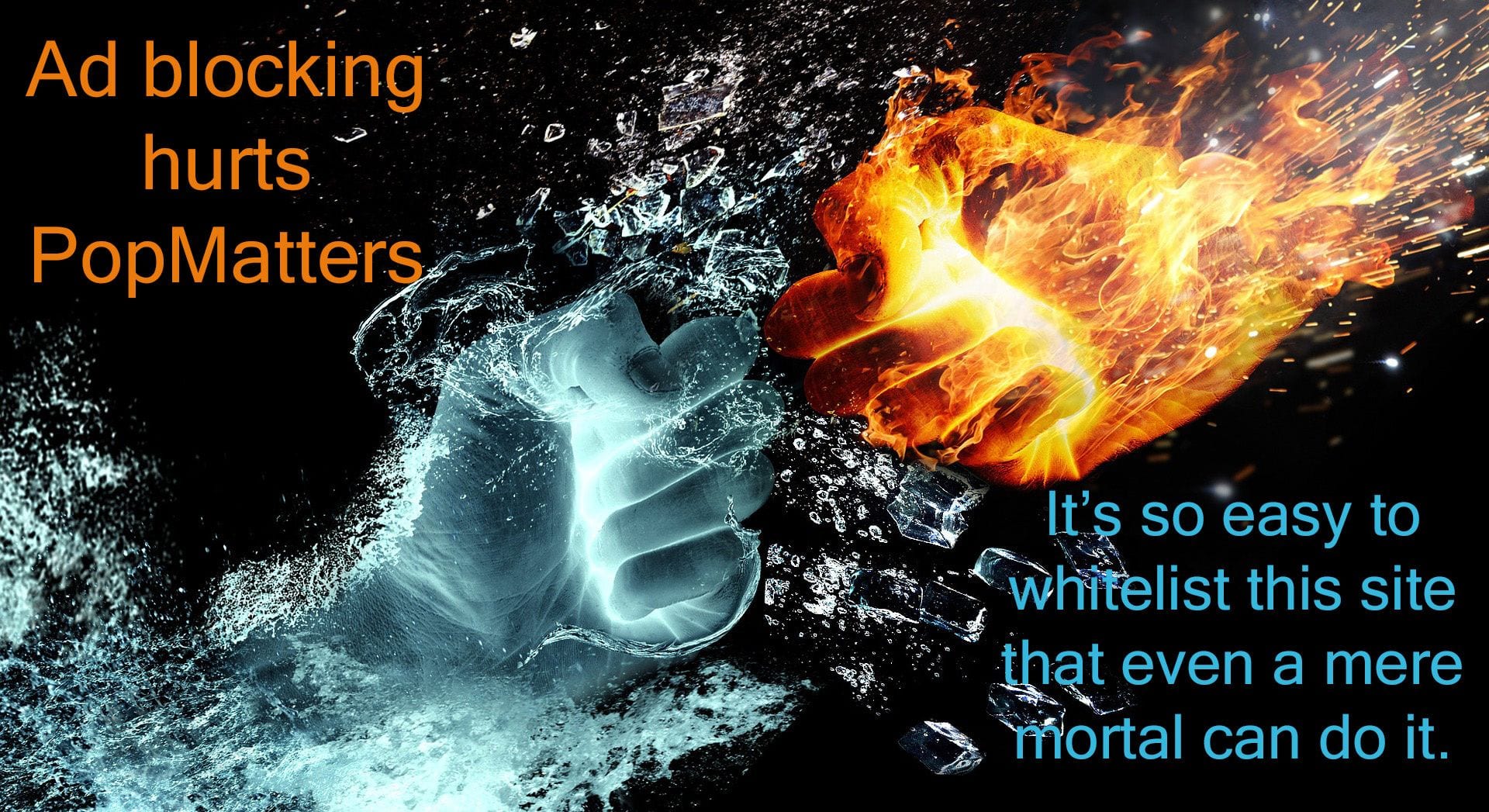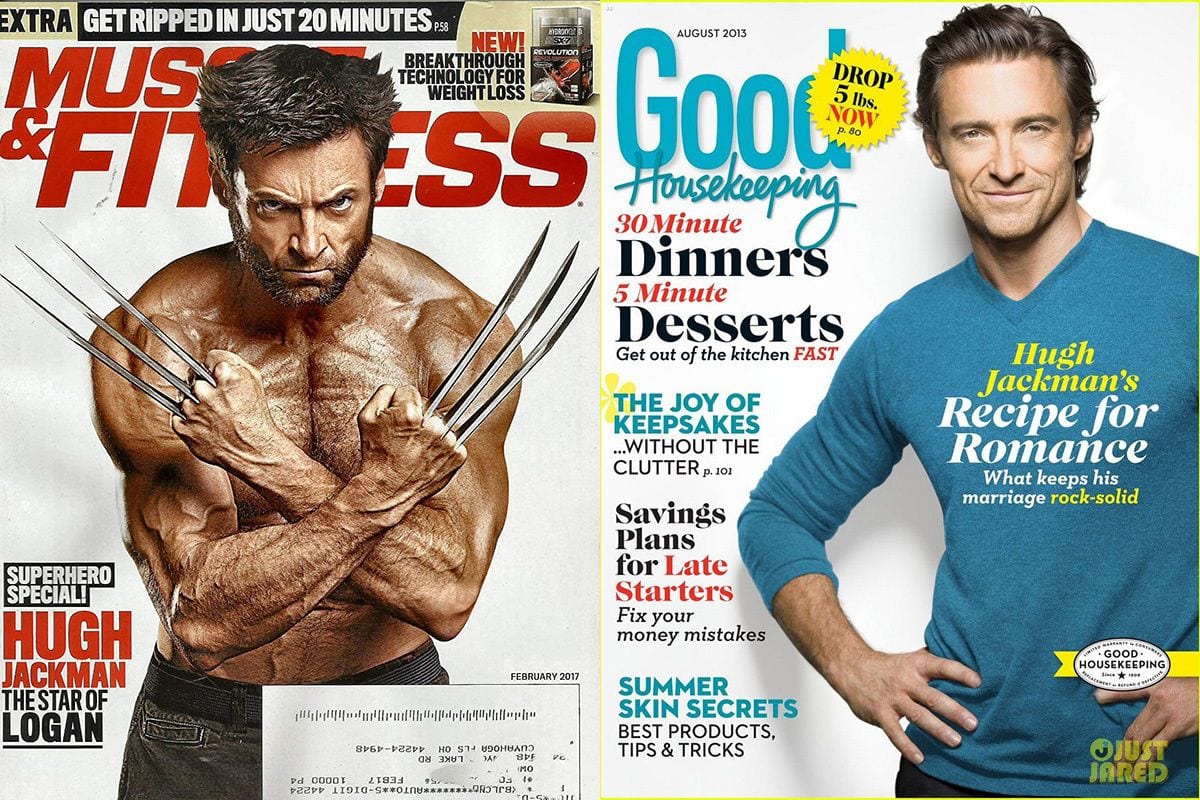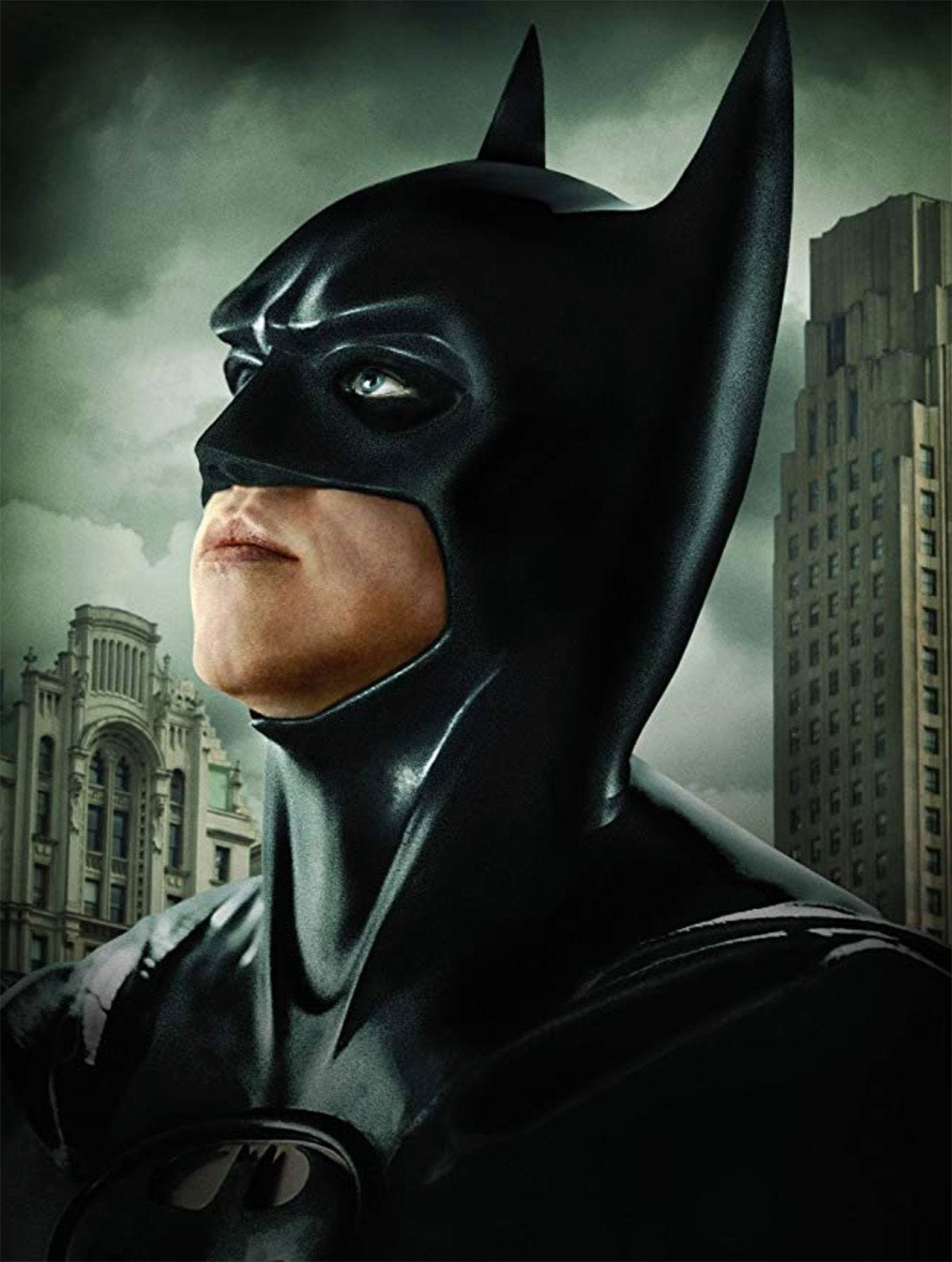Fire and Water by thommas68 (Pixabay License / Pixabay)
When I was in grad school working towards my MFA in writing, I wrote an essay on Val Kilmer’s portrayal of Bruce Wayne/Batman in Joel Schumacher’s 1995 film, Batman Forever. My thesis was that Val wasn’t the best Batman in cinematic history, but he was certainly the best Bruce Wayne. The professor had specified no guidelines for our choice of topic, and because in my other classes I was either writing lengthy, dry-as-melba-toast explorations on hermeneutics or painfully introspective memoirs on the worst things that have ever happened to me, I decided to do something ridiculous and fun for this assignment. I thought that no one would object to my subject matter, which was a problem I was finding in critiques on my personal essays on mental illness.
I was wrong.
Most of the critiques on my “BatVal” essay went the way I anticipated: people found it amusing and occasionally edifying. Then, a dissenter. One of the male students taking this class as an elective outside his major responded with vitriol. He went on a diatribe not about my craft or any of my arguments, but my basic premise. I didn’t commit his outburst to memory, but I do remember him saying, “Val Kilmer ruined the franchise for a decade.”
My initial reaction, honestly, was, “U mad, bro?” but since then, I have witnessed many men respond in a similar way to the mere mention of BatVal. I’m not an avid DC comics fan, but I did do enough research into the matter to know that the tonal change from Michael Keaton’s Batman films to Val’s turn under the cowl had nothing to do with Val Kilmer, who signed on without reading the script, because he was on location when someone called and offered him the part, and the obvious answer for any of us is, “Hell yes, I will be Batman.”
Warner Brothers decided they wanted to make the movies more family-friendly because they felt they could make a lot more money in merchandising if the films weren’t as dark as the Time Burton pictures. (They were right, though it turns out this philosophy went a little too far with the next installment, which starred George Clooney as the caped crusader and picked up the most Golden Raspberry nominations of 1997, with 11 total. If anything derailed the franchise, I’d think it was the picture that was so bad they didn’t even bother making any more sequels to sell toys with, but what do I know?)
When I thought about why guys don’t like Val Kilmer’s Batman, I assumed it was because they preferred Christian Bale’s growly, uber-dark portrayal, which, you know, to each their own, but personally I’m with Liz Lemon on this: “Maybe things men like are boring to women. Football, motorcycles, steak restaurants, really dark superhero movies: these are things that suck.” (@30rock_insults, Twitter)
Recently, though, I rewatched Batman Forever, and I have a new theory. The reason men respond so viscerally and so negatively to Val Kilmer’s Batman is because he is shown through the female gaze, and men get very, very uncomfortable seeing their superheroes that way.
Let’s break it down.
You’re probably familiar with the term male gaze. Feminist author Laura Mulvey coined this term in 1975 in the essay, “Visual Pleasure and Narrative Cinema“. If you went to art school, film school, or have a major with “fem” in the title, you’ve read it. If you haven’t read it, the basic premise is that (now, most; at the time, nearly all) cinema is given to us through a heterosexual male perspective, even down to the way the camera moves over the actors. Women in films are presented as objects of male desire, both for the male characters in the film and for the film’s audience. It’s easy to recognize, though it’s so prevalent that you may not realize what you’re looking at. Every time a camera pans slowly up an actress’s body, lingering like a lover’s touch, this is the male gaze in action. Every time you’re watching a movie and notice that, even though she’s the one speaking, the camera is not centered on the actress’s mouth, but on her chest, that is the male gaze in action.
The female gaze is a related, but not strictly analogous, term. A lot of men mistake the female gaze as being any time a male actor is shirtless onscreen, etc., thinking it’s a direct correlation to male gaze, just centered on men, this time. The trouble is, what women see in a narrative, what they want to see, is seldom rooted in the idea of treating the male body as a sexual object. There are a whole lot of reasons why, but it basically boils down to two things. Number one: women are biologically and socially wired differently than men. Number two: society still prioritizes heterosexual men.
In a million ways, from healthcare legislation to the ads you walk by in the supermarket, we are told that women’s bodies are objects. It’s no wonder that the male gaze exists, because everything society is telling us is that the purpose of women is to be used to gratify men. There is no existing correlation for women re: male bodies. Male bodies are just parts of men. Unlike women’s bodies, they belong to no one but the men themselves. So when you’re watching a movie with a beefy, shirtless actor, they’re not there because of the female gaze. They’re there because of the male gaze. They look like that because that is how men want to see their heroes.
My favorite example of this comes from a Tumblr post about the male gaze in superhero comics (CameoAmalthea, Tumbler). The point starts about the ridiculous, anatomy-defying, uber-sexual way female characters are drawn by male artists (in this case, the lycra-clad genitalia is unmistakable). The discussion is quickly derailed by a male fan who points to muscled, flexing illustrations of Batman and He-Man to prove that male characters are also drawn in hyper-sexualized ways to titillate female readers. Instagram user pmastamonkmonk reminds them that these, too, are part of the male gaze, and in order to differentiate the male gaze from the female, the best way is to look at publications specifically geared toward each demographic. The example they pick is Hugh Jackman. They show two magazine covers: one of the male-directed magazine, Muscle & Fitness, and one on the female-directed magazine, Good Housekeeping.
Val Kilmer as Batman and Chris O’Donnell as Robin / Dick Grayson (IMDB)
On the men’s magazine cover, Jackman is shirtless, flexing, looking mean and sweaty and like one of those bully whippets with the genetic defect that codes for twice as much muscle mass as it should have. On the women’s magazine, he’s smiling. His hair is bouncy and wavy, he’s wearing a blue sweater, hands on his hips. He looks for all the world like he’s happy and well-rested, and he probably has a pot roast in the oven.
Val Kilmer’s Bruce Wayne is Batman in a sweater with a pot roast in the oven.
Honestly, I’m not entirely sure how this happened. Usually when we talk about the female gaze in cinema, we are talking about films directed by women, but Batman Forever was directed by Joel Schumacher, who is a man. The director of photography is also a man, as well as three of the four people with writing credits. Is the source of female gaze BatVal the fourth writer, Janet Scott Batchler? If so, I think we all owe her a debt, but since I cannot prove it, I’m not going to send her a muffin basket just yet.
Here’s what I mean.
I want to talk about the general character design of Val’s Bruce Wayne. First of all, he’s blond, which I know is not a big deal, but in 1995, Val Kilmer’s Batman was the only superhero I had ever seen who had light-colored hair. It’s styled in a way that’s dangerously close to the cut sported by every ’90s teen heartthrob from Jonathan Taylor Thomas to Rider Strong. The part is different and it’s a little more adult, but there’s no escaping the fact that this is a cute haircut. The costuming is also really soft for what we’re used to seeing from a male superhero. It was the ’90s, which contributes a little, but all his suits are cut loose, and the man wears a black turtleneck in like, 50 percent of his scenes. It’s not a Steve Jobs black turtleneck, either. This is a sitting by the fire in a ski chalet in Vail turtleneck. It’s loose and plush. It might be made of cashmere, and if you look at it too long, you can kind of feel it between your fingers, which is not something anyone has ever said about anything Wolverine was wearing.
The character of this Bruce Wayne, even this Batman, is also unusual for the male superheroes we’re used to seeing. He’s not hyper aggressive, not uber male. Val’s Batman is low-key stalked by Dr. Chase Meridian, who is not only a woman, but is Nicole Kidman playing a female doctor who wears lingerie in half her scenes. When Batman is speaking to her, he calls her “doctor”, and he looks her in the eye. When Bruce Wayne is interacting with Dr. Meridian, he’s similarly respectful, but on the rare occasion he does something hyper-masculine that wouldn’t be out of place coming from the male gaze superheroes we’re used to — he gets flustered. Embarrassed. Apologizes. He hears what he thinks is an attack going on behind her office door, and he runs in to save her, breaking the door off its hinges in the process. When it turns out Dr. Meridian was just working out with a punching bag, he immediately looks sheepish and apologizes and puts the door back.
(IMDB)
There’s a shoe-horned line at the end of the scene when he tells her, “I’m going to have to get you out of those clothes…” She gives him a look. “…and into a black dress…” which, given the delivery of the line and everything else we’ve seen from this Bruce Wayne, is easy to read as trying for smooth flirting and missing by a mile, then regrouping awkwardly. Indeed, he’s so respectful of her boundaries that it’s almost wild, given what we’ve seen from male protagonists in the 24 years since the film was released. He asks her on a date; she says no, she’s met someone else, and he says, “lucky guy” and then drops it. Later, when they are on a date together, he sees she’s been profiling Batman, and he takes a step back, asking her if she’s sure she isn’t so interested in Batman that she really wants to see him, which is insane because he is Batman, but it’s also incredibly chivalrous.
Val Kilmer’s Bruce Wayne is also shown as a really solid, decent guy. Unlike Christian Bale’s vain, clueless playboy, Val Kilmer’s Bruce Wayne is shown as a responsible, charitable man capable of running a Fortune 500 company and helping rehabilitate orphans. He also actively discourages Dick Grayson (Chris O’Donnell) from violence and indulging in his revenge fantasies. Do you know how many action movies are about men indulging in their revenge fantasies and then murdering everyone? A lot. It’s practically its own genre. And Val Kilmer’s Bruce Wayne tells Dick “Two-Face Murdered My Whole Family” Grayson that violence will destroy him, and he should just be a normal kid and go to college.
So, BatVal: Respects women. Good provider. Good father figure. Dude’s even going to therapy to deal with his Bat Issues.
This is the female gaze.
There’s also a very literal female gaze moment in the film that I cannot recall seeing anywhere else in mass market film. Towards the end, when Batman is suiting up, there’s a gratuitous closeup of his ass in that Bat Suit. I’ve seen similar treatment of women in suiting up montages—I remember watching James Gunn’s Guardians of the Galaxy (2014) for the first time and thinking, during “Cherry Bomb”, why the fuck am I looking at Gamora’s ass right now? They didn’t show us anyone else’s ass—but usually if the camera treats a man like that, it’s for the sake of humor, and that does not seem to be the case here.
Sure, there are sexy, panning shots of men in movies. Some of them, we’ve discussed, are actually the male body viewed through the male gaze, describing the masculine definition of the male ideal. In some cases, I can say the intent is definitely to tantalize the female viewer—I’m thinking romantic “chick flicks” here—but you know what? almost always when this happens, the camera lingers on the man’s face. Pans down slowly, giving a good view of his arms, his chest, maybe even his stomach, with a teasing look above the hips to remind the audience, hell yeah, this is a man and he’s got a penis down there … and then it’s over. I have never seen the camera pay any sort of attention to a man’s ass when it wasn’t (a) for comedy’s sake, or (b) a gay movie. And this. Batman Forever, a mainstream superhero movie from the ’90s.
So not only is BatVal seen through the female gaze in all the ways we expect when we use that term, but he’s also shown in a way usually reserved for women in film. I think all of that makes a lot of heterosexual male viewers very uncomfortable. It isn’t just that this isn’t how they’re used to seeing their heroes. It’s that this isn’t how they’re used to seeing themselves. It’s that this isn’t how they’re used to seeing the world. They’re used to viewing their media through a male filter, and when that doesn’t happen, it’s confusing. Disorienting. Possibly scary.
So I understand the visceral reaction I got out of the guy who hated my essay. I understand why a lot of guys cast aspersions on this movie and Val Kilmer’s portrayal. It isn’t that they prefer Christopher Nolan’s movies. It’s that Batman Forever scares the shit out of them by reminding them that in this world there exists viewpoints outside of their own. This suggests — if just for the 15 seconds or so Schumacher’s camera lingers on that rubber-clad ass — that it’s possible for other people to see men the way men so often “see” women.
It’s uncomfortable, and they’re not used to discomfort. I get it. Embrace it, boys, if only for Batman Forever‘s two hour run time. The rest of us have been uncomfortable our whole lives.






